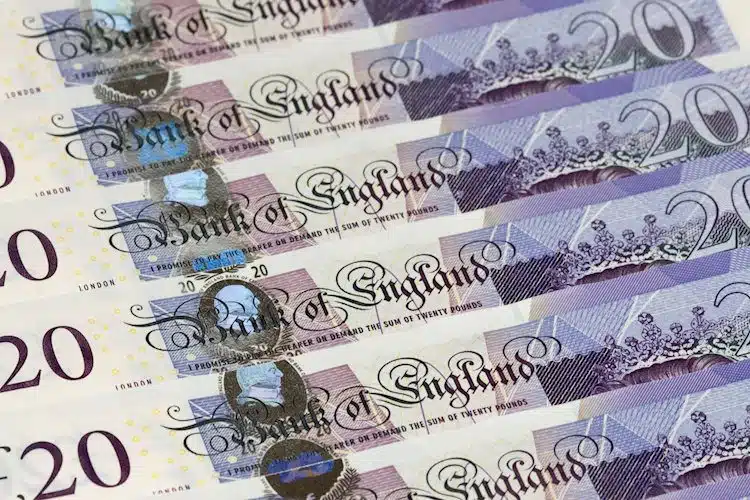The GBP/USD pair is set to finish the week with losses of 0.16%, as it dropped below the important 200-day Exponential Moving Average (EMA) at 1.2132, keeping the downtrend intact. At the time of writing, the GBP/USD is exchanging hands above the 1.2020 figure, above its opening price by 0.30%. The downward pressure on the GBP/USD was caused by data from both sides of the Atlantic.
On Tuesday, the UK inflation report contributed to speculations that the Bank of England (BoE) would not hike rates as aggressively as expected. In the US, softer than expected Consumer Price Index (CPI) for January exceeded estimates by bank analysts, incremented the likelihood of further tightening by the US Federal Reserve (Fed). The last piece of the puzzle was the Producer Price Index (PPI) for January, with data coming higher than estimates on a monthly basis. That spurred hawkish commentary by two Federal Reserve (Fed) officials, who said that rates need to be higher for longer, foreseeing them above the 5.0% threshold.
The US Dollar (USD) was further strengthened by the Philadelphia Fed Manufacturing Index, which collapsed, but comments in the poll by business executives commented that input prices jumped for the first time in 10 months. Given the backdrop, money market futures are pricing in a more hawkish Federal Reserve.
As a result, the GBP/USD extended its losses on Thursday, dropping 0.26%. But as the New York session progresses, the Pound Sterling (GBP) has gained traction against the US Dollar (USD), setting the stage to challenge the 100-day EMA.
The GBP/USD pair daily chart portrays the pair as downward biased, even though it’s recovering from falling for two straight days. The major found buyers around the 1.1900 area, which triggered an uptick to the day’s high at 1.2037, the 100-day EMA, where the GBP/USD was quickly rejected. If the GBP/USD achieves a daily close above the 100-day EMA, the pair will rally toward the confluence of the 200 and 20-day EMAs, each at 1.2132/35, respectively. On the other hand, a bearish resumption could happen once the GBP/USD tumbles below 1.1914, followed by the 1.1900 figure.
The overall outlook for the GBP/USD is bearish, as the US Federal Reserve (Fed) is likely to increase rates faster than the Bank of England (BoE). The US Dollar (USD) is expected to remain strong, as the US economy is outperforming the UK economy. The US economy is growing at a faster rate, and the US labour market is much stronger than the UK labour market.
The UK inflation report on Tuesday showed that inflation is lower than expected, and the Bank of England (BoE) is likely to take smaller steps in regards to rate hikes. The US Producer Price Index (PPI) for January was higher than estimates, and two Federal Reserve (Fed) officials said that rates need to be higher for longer, foreseeing them above the 5.0% threshold.
The Philadelphia Fed Manufacturing Index collapsed, but comments in the poll by business executives commented that input prices jumped for the first time in 10 months. Given the backdrop, money market futures are pricing in a more hawkish Federal Reserve.
Therefore, the GBP/USD is expected to remain under pressure, and the pair could continue to decline in the near-term. Investors should keep an eye on the US economic data, as it will dictate the direction of the US Dollar (USD) and the GBP/USD. A stronger US Dollar (USD) could push the GBP/USD lower, while a weaker US Dollar (USD) could give the GBP/USD some breathing space.
In conclusion, the GBP/USD is set to finish the week with losses of 0.16%. The downward pressure on the GBP/USD was caused by data from both sides of the Atlantic, with the US Federal Reserve (Fed) likely to increase rates faster than the Bank of England (BoE). The US Dollar (USD) is expected to remain strong, as the US economy is outperforming the UK economy. The US Producer Price Index (PPI) for January was higher than estimates, and two Federal Reserve (Fed) officials said that rates need to be higher for longer, foreseeing them above the 5.0% threshold. The Philadelphia Fed Manufacturing Index collapsed, but comments in the poll by business executives commented that input prices jumped for the first time in 10 months. Given the backdrop, money market futures are pricing in a more hawkish Federal Reserve. Therefore, the GBP/USD is expected to remain under pressure, and the pair could continue to decline in the near-term. Investors should keep an eye on the US economic data, as it will dictate the direction of the US Dollar (USD) and the GBP/USD.


